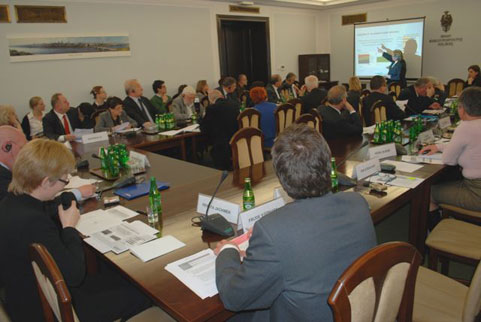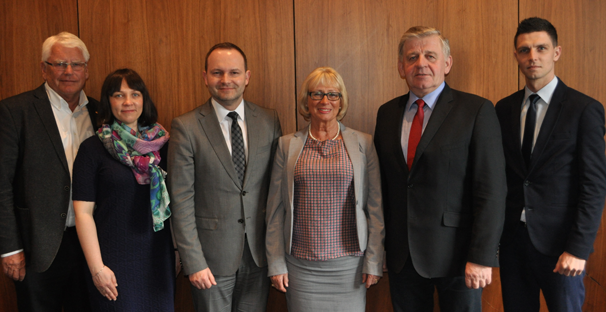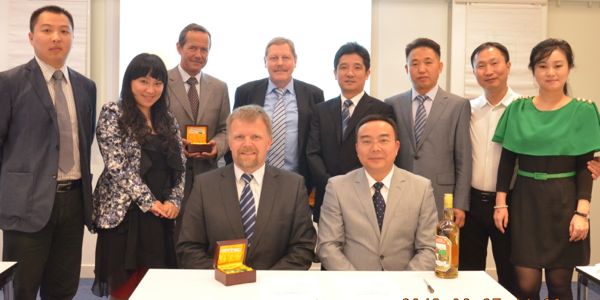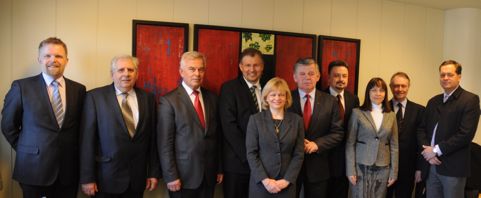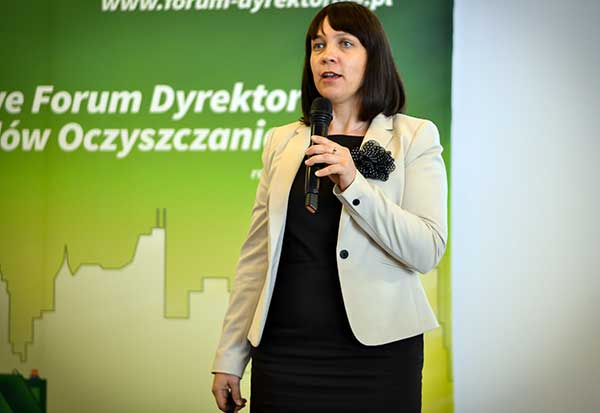 |
Ennox Oil Solutions is a good example of a new business opportunity resulting from the intersection of two very different sectors of the economy. In this case, some innovators offering industrial waste treatment solutions encountered some fellow innovators offering solutions for oil well stimulation. They realized that their solutions could be combined to create all-new technologies and products. That was the starting point for developing the patented EGX (Ennox Green Extraction) process, a solution for extracting oil from solid materials such as soil, sand, and mud.
“We now have a very strong offering in a fast-growing market,” said Rune G. Nilssen, CEO of Ennox Oil Solutions, by phone from Toronto, Canada.
As chance would have it, Nilssen was based in Toronto and the company’s two other founders in Oslo when Ennox was created in the summer of 2010. The company is the successor to Wellco Oil, which had well stimulation operations in the Middle East in the late 2000s. US and Canada have become important markets, where the company has recently signed a contract with one of North America’s biggest petroleum waste management companies.
The EGX process has been central to the start-up and growth of the Ennox business. Nilssen explained what makes the process unique:
“The process is used to separate out heavy and light crude oil from sand, soil, and other solids. The technology that currently dominates the market is heat-based, and as such is expensive and heavily polluting. We can extract the oil without using heat, thereby achieving significant cost and environmental gains. Our recovery rates are right up there with the best, and we meet strict emission requirements such as those applying in the Norwegian sector of the North Sea.”
Two-stage separation process
Basically, the solution involves a two-stage process where the mass to be treated is first flushed at extremely high pressure with water containing a special, environmentally friendly surfactant. The pressure causes explosions that release the oil from the material to which it is attached. The mass is then washed again with the surfactant, releasing any residual oil deposits. At the end of the process, well over 99 per cent of the oil has been recovered.
The patent covers the treatment chamber, the use of the surfactant, and the method, and this is where Ennox really stands out from the competition. Where other methods have burn fuel to heat the sand or other material containing oil to a temperature of several hundred degrees Celsius, generating considerable CO2 emissions in the process, the Ennox method uses only clean water at high pressure. The process does not release any CO2, and the surfactant used is environmentally friendly. The water is reused in the course of the process, and the extracted oil goes for commercial production.
 CEO Rune G. Nilssen
|
The method has also been tested on old waste. One test involved oil waste that had been sitting in the deserts of Bahrain for over 40 years – also known as weathered crude. At the start of the process, the material had the consistency of dry, hard lumps of tar. It emerged at the other end as pure, liquid oil. The same result was achieved with material from the Canadian oil sands.
“We’re managing to recover resources in a way that’s both valuable and efficient,” said Nilssen. “We aim to play an important part in remediating and recovering resources such as sand and soil, while returning the extracted oil to the market. Often, a barrel of clean sand is worth more than a barrel of oil.”
Focus on cleantech
On the advice of the Alberta Research Council and others, the company is now increasingly focused on the remediation side, rather than on oil production. The oil sands market is heated, with an ever-increasing number of players and rising output. In contrast, few players are focused on the huge need for remediation resulting from oil extraction and refining. This need is present both in new markets, faced for the first time with regulatory requirements to introduce and document effective remediation processes, and in long-time oil-producing countries, where large landfill sites containing polluted waste from the oil industry are a problem. What is more, there are few technologies capable of profitably recovering oil from the waste. In this respect, EGX is unique and has great potential.
Nilssen was bullish about the market outlook for the concept and the company’s growth prospects:
“The contract we recently signed in North America with a waste management company will be crucial to us. Our partner is a publicly traded company, .quickly emerging as the market leader in the North American market”
“Under this contract, we are to build a full-scale test version of the remediation plant for sand and organic materials containing oil. Although this first version will be a large-scale test facility, we intend to quickly expand the scope of the project. Canada will be a key market for us, because it’s one of the few countries in the world that currently allow dumping of oil waste. Heat-based technology consumes more energy than it manages to recover, which is not the case with our technology. In North America, there are huge volumes of oil waste going untreated at present. Together with our partner here, we’re aiming to be first to market with technology that can remediate the sand and recover the oil in a financially viable way. Our partner currently extracts oil from water and sells it in the market for well over half a billion dollars, but they are not yet extracting oil from solids.”
“Meanwhile, we are mapping oil industry activity and deposits of sand, clay, etc. containing oil region by region across the relevant parts of the globe. Our goal is to identify regions and active companies in the same category as the partner we’ve recently signed a deal with. In this way, we aim to spread our technology and solutions to more markets where we can enter into long-term contracts.”
New pilot project in Sandefjord
Nilssen denied any suggestion that Norway would become a peripheral market for Ennox in the future:
“On the contrary, we are hoping to step up our activities in Norway at the same time as we expand into other parts of the world. We currently have a great working relationship with Allum Industrier in Sandefjord. In partnership with Allum, we’re setting up a large-scale test facility for our technology, and here too we’re optimistic about our chances of quickly ratcheting up to commercial production. Allum has been involved at the design and engineering stages, and is playing an active part in getting the pilot project up and running.”
Other valuable alliances to refine and disseminate the technology have been formed with Professor Mathias Wilichowski at Wismar University of Applied Sciences in Germany and with Aquateam COWI, another Norwegian company. Wilichowski, a specialist in recycling and oil separation, brings extensive know-how concerning recovery technology. He is playing a central role in building networks, especially in relation to testing and analysis of test results. Aquateam COWI, meanwhile, has risen to prominence in recent months as a key adviser and partner in targeting new market segments for the technology.
“Aquateam COWI is an important partner as we turn our attention to the offshore market,” said Nilssen. “Compared with the leading technology used in the offshore industry, our technology takes up 10 per cent of the space and uses a fraction of the energy to recover the oil. Space is at a premium offshore, so this kind of saving matters a lot. Oil companies operating in the Norwegian sector are increasingly making it a priority to find a waste management technology that can be used on the rigs, rather than transporting waste such as drill cuttings to shore.”
Licensing model
Having recently completed a stock issue in Norway, the company is planning for moderate growth, with financial targets extending over a two-to-three-year horizon. The goal is to deliver 20 complete systems over the next five years. To maintain effective control of technology and method development, the company is adopting a licensing model, whereby the machinery will be owned by Ennox and deployed by partners, with Ennox obtaining a return through licensing agreements.
The year that has just started represents an exciting phase in the company’s development and market launch, with many positive indicators. The level of interest in the EGX process and the company’s expertise gives no cause for complaint. With investors in place and contracts and processes already in hand, Rune G. Nilssen and his Ennox co-founders, John Hestenes Hansen and Knut Hansen, along with the rest of their team, have every chance of success.






















